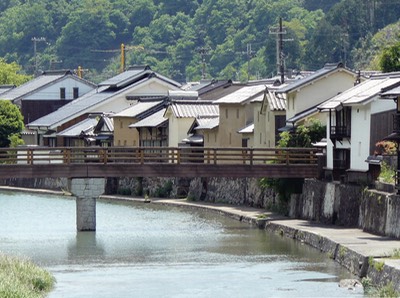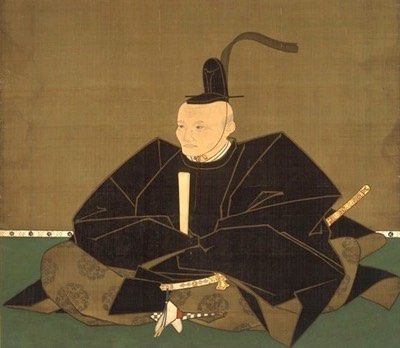The Mimasaka Narrative
The somewhat dubious honor of being the first recordist to claim that Musashi was born in the province of Mimasaka goes to Mikami Genryū, who in his Gekken sōdan (1790) states that “Master Musashi was born in the village of Miyamoto in the Yoshino district of Mimasaka province.” The most ardent proponent in the so-called Mimasaka-setsu, or the Mimasaka narrative of Musashi’s origins is Masaki Teruo, who served Matsudaira Yasuchika, the daimyō of the Tsuyama fief in Mimasaka, as an advisor and instructor in the Kōshū-ryū, a school of martial arts connected to he house of Takeda Shingen.
In his Tōsakushi (1851), Masaki explicitly states that the Honchō bugei shoden (1714) is wrong in claiming that Musashi hailed from Harima. In doing so Teruo seems to go agains a number of other records on Miyamoto Musashi, many of whom were written decades, if not centuries before the Tōsakushi. The Harima Kagami (1762), a topography compiled in 1762 by Hirano Yōsai. for instance, states that “Miyamoto Musashi hailed from the village of Miyamoto in the vicinity of Ikaruga in the district of Ittō.” More importantly, in his Gorin no sho, Musashi was the first to claim that he was a native from Harima.
There may, however, be specific reasons why Musashi preferred to consider himself a native of Harima, rather than Mimasaka. First of all his father, with whom he had a troubled relationship came from Mimasaka (see Musashi’s father). However, his beloved stepmother, Yoshiko, came from Harima (see Musashi’s Mother). It was at her place, the village of Hirafuku in Harima, too, where he spent the most happy years of his childhood. Not surprisingly, Harima had also been the place where he had settled down during the middle years of his life.
Another reason for Musashi’s willing misrepresentation of his roots in his Gorin no sho may be the fact that, like many of the other western provinces, the province of Mimasaka had been the breeding ground of Tokugawa dissent in the run-up to the Battle of Sekigahara (1600). Indeed, Ukita Hideie, at that time the daimyō of both Bizen and Mimasaka, was one of the ringleaders of the Mitsunari alliance and the first to mobilize his troops when he held a ceremony for those who would go into battle at the Hōkoku shrine in Fukuoka. This was on September 8, eleven days before Ishida Mitsunari and his co-conspirators decided to move against Ieyasu at a secret conference at Mitsunari’s stronghold of Sawayama castle.
When Musashi was writing his Gorin no sho he was the guest of Hosokawa Tadatoshi (1586–1641) whose father had been one of the first to chose Ieyasu's side in the run-up to the Battle of Sekigahara. Likewise, Musashi's former hosts, Ogasawara Tadazane (Akashi) and Nagaoka Okinaga (Kokura), had both been chieftains who had fought and earned their promotions by joining Ieyasu’s side. Musashi had nothing to hide in this respect (see Musashi's Battles), but as he had never really been in their service, he may at the same time have felt ill at ease with the idea that he was really a native of Mimasaka.
Nor are some of the records that have traditionally been used by proponents of the Harima-setsu, or the Harima narrative, as explicit as some historians would suggest. The Honchō bugei shoden, for instance, merely states that Musashi “hailed” from the province of Harima and that he was “a scion of the Shinmen, a strand of the Akamatsu.” Thus one might consider someone who has been raised in Harima as someone who hails from Harima. Equally, the Shimoshō mura kojichō—a record from a village in Mimasaka province—merely states that in 1599 Musashi “left the country for Kyushu.” not specifying whether the country in question (lit. tōkoku) was Mimasaka or Harima. Even Musashi’s son Iori seems to shy away from explicitly stating that his father was born in Harima. Thus, in the Kokura hibun (1654) he only mentions that Musashi was a scion of the Shinmen, last descendants of the Akamatsu of Harima. More tellingly, the Tomari jinja munefuda (1653) he states that:
作州の顕氏に神免なる者があった。天正の間、あと嗣ぎが無いまま、筑前秋月城で亡くなった。その遺を受け家を継承したのを、武蔵掾玄信という。後に宮本と改氏した。
Among the Akamatsu diaspora of the province of Mimasaka there were those who belonged to a line called the Shinmen. During the Tenshô era the Shinmen line came to an end at Akizuki castle in the province of Chikuzen because there was no successor. Heir to this house and heritage was a man named Musashi Genshin, who later took on the family name of Miyamoto.
Where most records are content with merely mentioning that Musashi was a scion of the Shinmen, a strand of the Akamatsu, the Tomari jinja munefuda—the first written record on Musashi outside those from his own hand—establishes a clear link between Musashi and the Shinmen from Mimasaka.
It is here where the Tōsakushi and the other records in the Mimasaka-setsu tradition become so compelling. They, after all, seek to shed light on Musashi’s roots, his youth, and the setting in which he was raised, rather than just copying each other where it concerned his roots and just dwelling on his adventures during his later life as a swordsman.
Any queries of remarks? Launch or join a discussion at our new FORUM

